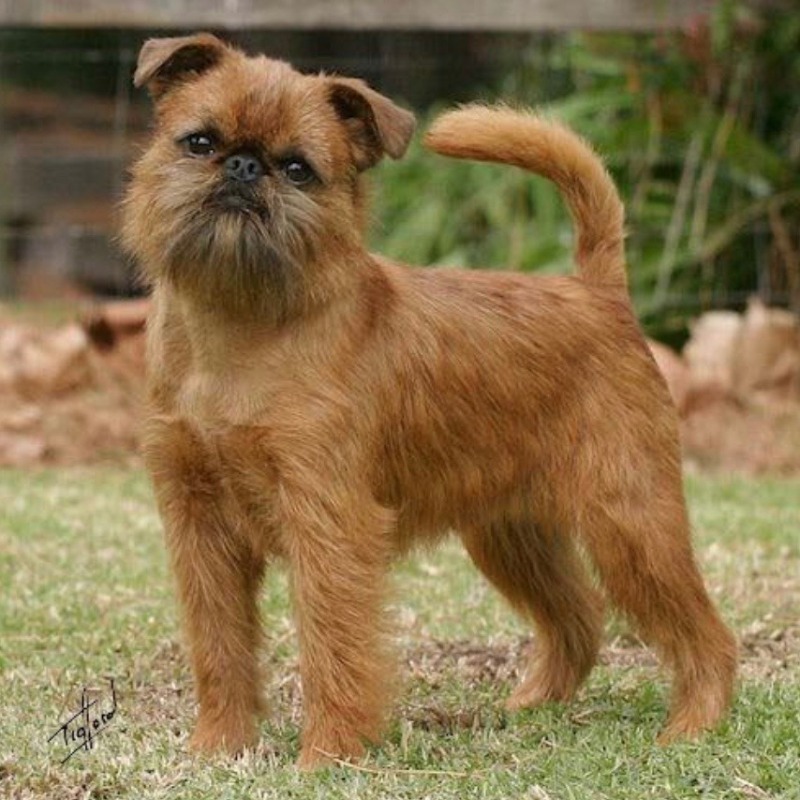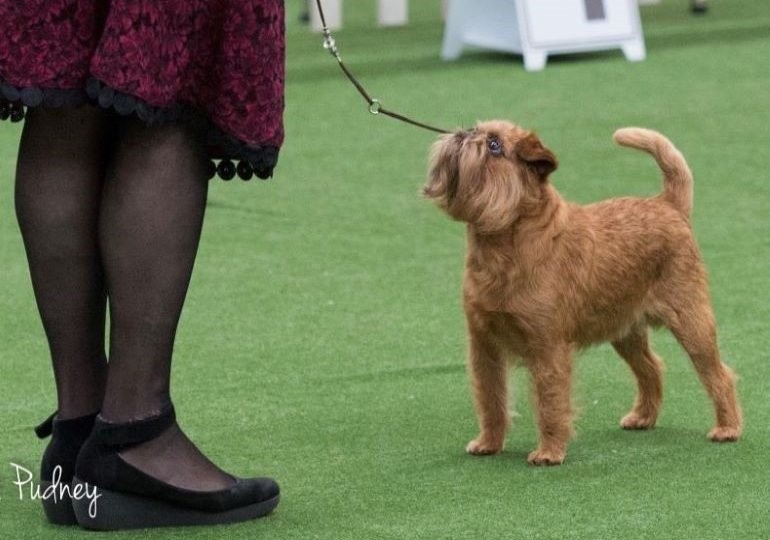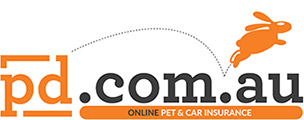Breeds
Griffon Bruxellois

GROUP 1 - TOYS
Brief History
The plucky, brave, extrovert Griffon Bruxellois is a true survivor. His is a tale of rags to riches as this little street urchin became a sophisticated lapdog. The Griffon began his life on the streets of Brussels, Belgium’s seat of power in the 1800’s. The coachmen of Brussels kept small tenacious dogs of terrier temperament to rid the stables of rats and vermin. His more ancient cousin, the Affenpinscher, was used in his development. In fact, many other breeds are famed for their contribution to the Griffon’s makeup, including Toy Spaniels (especially those ruby or red in colour), Pugs and perhaps even the Yorkshire Terrier. This little dog fell on good fortune in 1870 when Queen Henrietta of Belgium became smitten by his impish looks and beguiling personality. Courtiers followed suit and his popularity and survival was assured.
Average Life Span
When considering a dog, please realise that you are taking it on for its lifetime.
The average life span is 12 to 14 years.
Temperament
The Griffon Bruxellois is a small dog with definite terrier instincts and an inflated sense of self-worth, however, his arrogant expression belies his loving and amiable disposition. The Griffon is very much what you make it. If you have children, the dog will enjoy their hijinks and energetic walks. As with all dogs, young children and pets should always be supervised when together. If you are older and your daily pursuits are a little more leisurely, the dog will adopt a more sedate outlook and become a close and loving friend. Griffons are very trainable, and many have obedience and agility accolades to their name.
General Breed Description
A cobby, square little dog, the Griffon is adored for his distinctive face and monkey like expression, which is almost human. The Griffon has a short face with bright eyes. They come in two coat types with their own name, either rough (Griffon Bruxellois) or smooth (Petit Brabançon). The roughs have a harsh, wiry coat and a beard; the smooths have a short harsh coat and no beard. They come in two colours, either solid red or black with tan markings. They ideally have dark shading to the face.
Coat and Care Requirements
The rough coated Griffon requires stripping or clipping as it is a double coat and the dead hair has to be removed for the new coat to grow. Whether you strip the dog by hand or take it to a groomer to be clipped is up to you. The smooth coated Griffon does not require stripping or clipping. but does grow his coat to suit the seasons and thereby sheds the old one while growing the new one. Both coat types require regular brushing to keep the coat shedding and growth under control. Griffons are inquisitive and want to know what goes on around them. For this reason, never leave a Griffon alone in a backyard when going out as they can dig under fences and gates and they may have made a daring escape by the time you return home.
Size
Weight: 3.2 to 5kgs.
Health
All breeds have individual health issues. When speaking to breeders it is recommended you enquire about the breed’s health and what health testing the breeder does. The Griffon is generally a healthy breed, however health conditions do occur occasionally. These may include heart problems, eye defects such as cataracts, and orthopaedic problems such as patella luxation and hip dysplasia. Like all flat-faced breeds, Griffon owners must be mindful of the dog’s well-being and breathing on hot or humid days.
Suitability
Early socialisation and puppy training classes are recommended for all dogs and help to ensure that the Griffon grows into a well-adjusted, well-mannered companion. Griffons are highly intelligent and form a strong bond with their owners, which makes them easy to train. As with many toy breeds, though, housebreaking may take some extra time and effort. Griffons have a very sensitive nature, and they do not respond well to harsh corrections or training methods. A Griffon wants to be with his family, often following his person from room to room, and unwelcome behaviours can result if he is regularly left alone for long periods of time.
In Conclusion
Now you know a little more about this breed. If you have decided this is the dog for you and wish to investigate further, please contact the Breed Club or Dogs Victoria. They will be able to give you information about available puppies and also suggest dog events where you can see the breed and speak to breeders. In this way you will gain a better perspective of the breed and its needs. With any breed of dog, it is important to research and determine suitability for your lifestyle before committing to a puppy which will be a part of your family for many years to come.
Whilst many breeds are recommended for families, it is imperative that when children are with dogs they are supervised at all times. Basic obedience training is a vital part of dog ownership.
Dogs Victoria is about the responsible ownership of all dogs and in particular the preservation of pure breeds.
Link to Dogs Australia Breed Standard: https://dogsaustralia.org.au/breed/detail/23
Breeders




